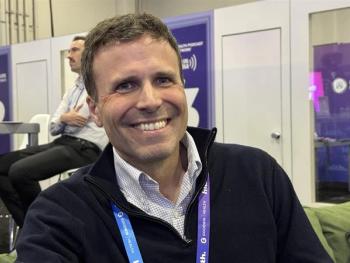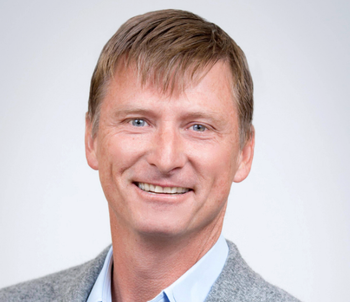
How to Ease the Time Pressure That Contributes to Physician Burnout
Geeta Nayyar, M.D., MBA: It’s really clear that one of the cultural shifts for physician burnout will come from the consumer change, the consumer expectation and the technology being able to do it. So Heather, in a recent blog post, you wrote about how physicians are always rushed, and how technology could help them not have that rushed feeling and that urgency.
Heather Staples Lavoie: Sure. Usually when a physician goes into the room, they’re trying to log into the system, they’re trying to find the patient, and they’re trying to pull up the problem list. And so much of that is them feeling like they’re in the hot seat as they’re just trying to assess what’s going on with that patient at that point in time and navigate through the system at the same time. And they realize that, “Oh, wait, you might have had laboratory tests, and I’m not finding the labs. Where are those labs? You’ve had a consult with another specialist, where is that?”
And a lot of that burden can be managed by proper planning ahead of the visit. And so if you have other care team members who, before a patient presents, are doing morning huddles and looking at who’s coming in for the day. Do we have all their labs? Do we have the specialist visits in? Oh, there are open gaps in care. Have we addressed those? Do they need a prescription refill? Why don’t we make sure that we get that ready ahead of time so it’s all ready for the physician, and some of that preparation is already done.
So when the physician enters the office with the patient, they can begin with a dialogue instead of a feeling of panic that they are in the hot seat and cannot find information that they ultimately are accountable for. And so it just changes the tone, the tenor, of the appointment altogether when they can present in that way. They don’t need to be hunting down all of this information. Other caretakers — it can be a medical assistant; it doesn’t even have to be a nurse — can be helping in the preparation.
And those practices that perform morning huddles end up having better outcomes, higher satisfaction. It’s a central tenet. Medical homes are actually practicing that. And in the past, when I’ve looked at health outcomes across sites that did morning huddles versus others, there were much better outcomes and a much higher degree of coordination even among the physicians in the practice altogether.
Rasu Shrestha, M.D., MBA: Your point about the morning huddles resonates with me because I completely agree with you on that. I always say that the funny thing about clinical work flow in general is, if it doesn’t work and if it doesn’t flow, then that’s not workflow, right? Look at morning huddles and the specifics of how you have residents or fellow trainees maybe aiding in the work that you’re doing, or if you have scribes or PAs [physician assistants] who are helping you as well. Go down to the specifics of how that’s actually working, how those huddles contribute to the overall efficiency of that workflow.
And then you marry that with the advent of technology, technological capabilities, and you suddenly realize that all of that scut work that used to be done can also be done by technology. AI [artificial intelligence], for example, could mine for relevant bits of information such that when contextually represented and presented to you at the point of decision making, it could actually make a tremendous amount of difference in reducing burnout for the physicians.
Heather Staples Lavoie: Absolutely.
Geeta Nayyar, M.D., MBA: This idea that your physician is going to see you for 8 to 10 minutes once in six months, possibly twice if you’re lucky, is ridiculous, right? And the opportunity we have with technology is to extend that visit: pre, during, post, whatever the technology might be. Janae, do you have any thoughts on that, particularly with a new baby in the house?
Janae Sharp: I really think there are so many opportunities for technology to make things easier. And actually, I have a physician who uses technology that way, and I sought them out. I asked, “Hey, who is good at these things?” And then I sat down with him and talked to him about it. Ideally, they’ll be able to get that picture really quickly, but I don’t have to spend tons of my time, and they don’t have to waste their time. I don’t like wasting time.
Geeta Nayyar, M.D., MBA: It is ultimately win-win, right? Because now you have a physician who’s also satisfied with their job, has better tools, and has better assets.
Navigate the digital transformation with confidence.
Reduce Physician Burnout






































